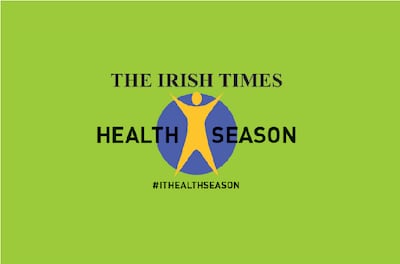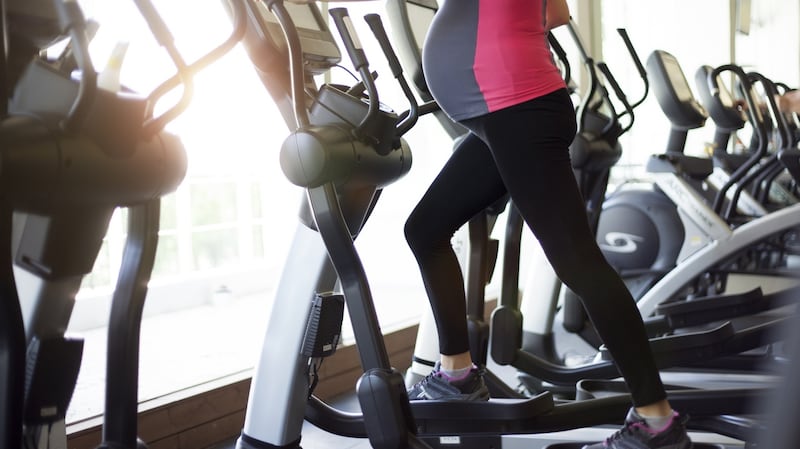
Aoibhín McGreal is the founder and clinical director of Vie Physio, a specialist pelvic and women's health physiotherapy clinic in Co Kildare. In the second of two articles she gives some advice and tips for pregnancy and the postnatal period.
– The benefits of exercise for pregnant women can’t be stressed enough. It helps to: control weight-gain, reduce high blood pressure, improve sleep and improve mood. Aim for at least 150 minutes of moderate intensity exercise every week, ideally spread out. Moderate intensity means that you might be slightly out of breath but can continue a conversation.
– Avoid sports with a risk of contact –you don’t want to bump the bump. From 16 weeks avoid exercises where you’re lying flat on your back. Switch to a prenatal exercise class which will take this into account. Yoga, pilates, and strength and conditioning can all be modified during pregnancy.
– Swimming and aqua-exercise classes are excellent options. If you are finding it more difficult to walk, or have pain or discomfort with other exercise, novel movement, like Tai-Chi, water-based exercise, even dance, can be more comfortable.

– Pelvic floor exercises are important during pregnancy and after birth. To check if you are contracting these muscles correctly, place a finger on your perineum – the space between the vagina and back passage. You should feel an inward movement as you squeeze, and an outward movement as you release.
– Begin perineal massage four to six weeks before delivery. It’s thought that it can stretch the tissues, making labour easier.
– Use diaphragmatic-belly-breathing to help relax the pelvic floor during pregnancy, in labour and after birth. Women often hold tension in these muscles. As you inhale let your tummy expand and your pelvic floor relax.
There is no 'one perfect posture' so take desk breaks and avoid being in one position for a long time
– Many women experience aches and pains during pregnancy. Most often there is no tissue damage. However, heightened sensitivity, what we call an upregulated nervous system, and stress are all contributing to discomfort. One example is pelvic girdle pain. What’s going on might be very minor bio-mechanically, but because the area is so sensitised it becomes much more painful. We often find that women with pelvic pain are overactive and tense in their groin and pelvic floor. Add in stress, a demanding job, poor sleep, caring for other children at home, a previous trauma to the pelvis or to the back, and these are all risk factors for pain. Rather than telling women not to move a particular way our approach now is to help them to relax through their body, so they are more comfortable.
Group sessions
– Many hospitals offer group sessions and support belts for pelvic pain, which can help. If this isn’t working you may need some individualised physiotherapy to reduce pain and encourage normal movement.
– Find ways to destress that work for you. Try specific pregnancy-related apps for relaxation, like Gentlebirth. Listening to guided relaxation, which takes you through your body and might bring awareness to areas of tension that you didn’t realise were tight.
– Going around in bare feet or slippers during the day – very common because of working from home – can contribute to joint and back pain for some people. Try wearing supportive footwear, like runners, and see if that helps.
– There is no “one perfect posture” so take desk breaks and avoid being in one position for a long time. Sitting sometimes on an exercise ball can allow more movement.
– Rib pain is common and is also aggravated by sitting for long periods. Yoga or pilates can help because they include exercises that rotate and open the thoracic spine and rib cage. However, even doing some deep breathing throughout the day can help.
– Carpal tunnel syndrome-pain, numbness, and tingling in your hand and fingers is common in pregnant women as the nerve in the wrist can become compressed with swelling. The physiotherapy department at your maternity hospital can provide a splint. Elevate and rest your hand when possible, on a pillow or cushion placed higher than your heart. Running cold water over the wrist can reduce swelling.
– Applying heat-warm baths, heat packs and wraps provides relief for tight aching muscles. Use cold and ice to reduce inflammation. Post-birth use perineal cold packs or freeze maternity pads.
– Whether you have a vaginal birth or a C-section give yourself time to recover. It will take 6-8 weeks for tissues to heal, every woman is different.
Don’t panic
– Your pelvic floor may feel and function differently. Don’t panic. Keep your fluid and fibre intake up. It’s very important that bowel motions are regular and easy to pass. Initially it may help to support the perineum as you empty your bowel; wrap some toilet roll around your hand and press gently against your perineum. As you feel able gradually restart pelvic floor exercises.
Some women will get back to pre-pregnancy fitness quite quickly, others will take longer. Be patient with yourself
– Over 50 per cent of women surveyed for the Mammi Study experienced urinary incontinence three months after the birth of their first children, and 7 per cent had faecal incontinence. Issues such as these are relatively common but supervised pelvic floor training will improve symptoms for the majority of women.
– We see a lot of upper back, neck, shoulder and lower back pain in new mums, as they spend so much time sitting in a flexed position, feeding or bent over changing their baby. Common traits include: jaw clenching, breath holding, abdominal gripping and holding tension in the body, e.g. from gripping buggy handles. Once again relaxation techniques will help.
– When you are feeding support your arms with pillows. Sit back into your chair so that you’re not holding tension or scooping down to feed the baby. If you are bottle feeding alternate sides instead of always holding on one side. Change your baby using a changing table or if you are changing on the bed kneel so you aren’t bending over for prolonged periods.
– Supportive clothing can be really helpful after birth, including very high waisted leggings or specific compression shorts which support the abdominals and pelvic floor. By the end of pregnancy all women will have diastasis rectus abdominus – a widening of the gap between their abdominal muscles. However, if this hasn’t closed after 6-8 weeks see a physiotherapist.
– Some women will get back to pre-pregnancy fitness quite quickly, others will take longer. Be patient with yourself. We refer to the Postnatal Return to Running guidelines to ensure a gradual return to sport while avoiding injury and pelvic floor dysfunction.
– I'd highly recommend the Rotunda hospital's physiotherapy videos , rotunda.ie/physio and Sport Ireland's exercise series for new mums sportireland.ie/keepwell/videos/postnatal.










